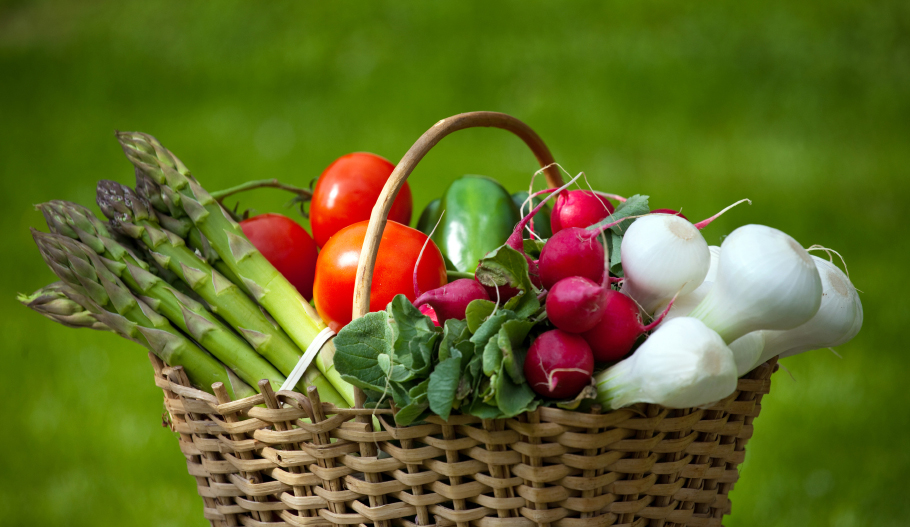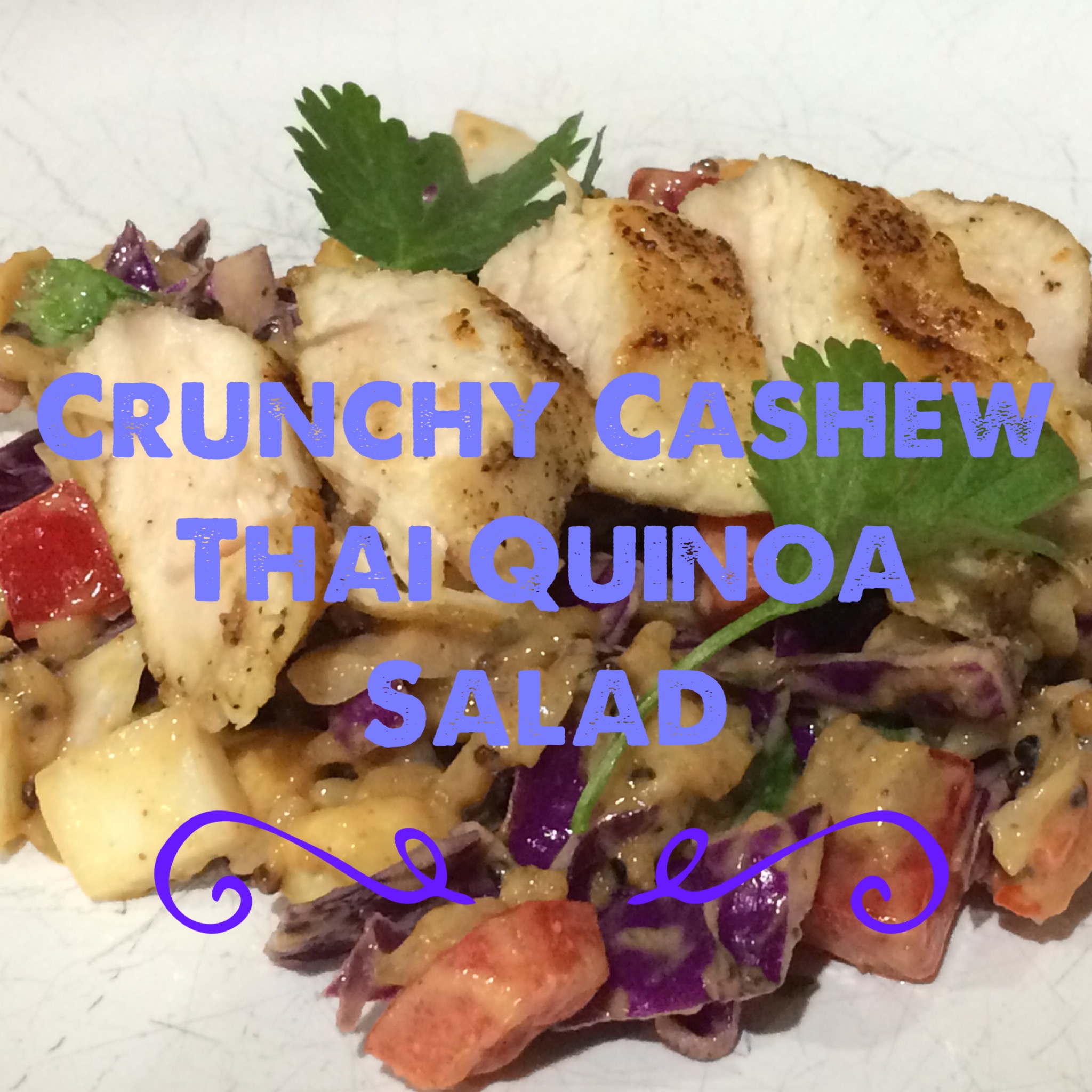
Healthy Spring Food

Spring is here! Summer is just around the corner! The days are getting longer, the air is getting refresher, and everyone seems to be in a good mood. This changing of the season marks a time for all things to come alive and experience renewal.
During this time of renewal, allow fresh healthy Spring foods to crowd out unhealthy food & unhealthy habits.
Simply eating more of the fresh foods you’ll find at your local market will gradually crowd out any lingering rich or heavy foods until you no longer desire those anyway.
To help you embrace the season, I’ve put together a list of spring foods and how to use them. Most of these require minimal cooking so they’re also great for those of you who are busy and don’t have much time for food prep.
Of course, what’s in season for you will depend on where you live, and you may have already had access to some of these foods year-round due to importing, but trust me when I tell you that eating the local seasonal variety will taste and smell much better. Their level of freshness will also benefit your body in a much deeper way.
Enjoy these 10 delicious spring foods!
Lettuce
(leafy greens like Romaine, Arugula and Red Leaf Lettuce)

Rich in vitamins like A, K, and folate, plus chlorophyll, fiber and even water, these leafy greens will help reduce inflammation while also hydrating and detoxifying your body.
How to eat it: Just toss raw greens in bowl with other veggies, nuts or seeds and drizzle with some extra virgin olive oil and aged balsamic vinegar or citrus juice. Chop or tear them into bite-sized pieces to enhance the texture of your salad.
Artichokes

Available in both spring and fall, artichokes are rich in folic acid, vitamin C, B-complex vitamins, and many minerals. These nutrients help lower cholesterol, ensure healthy pregnancies in women, reduce free radicals, and ensure optimal metabolic cell function.
How to eat them: Place artichokes stem-end-up in a steamer basket over 2 inches of water in a large, deep pot. Bring the water to a boil over high heat. Cover and steam until the stem and base are tender when pierced with a sharp knife, 25 to 30 minutes for medium artichokes, 40 to 45 minutes for jumbo-size artichokes.
Check out this recipe from Eat Well:
Sun-Dried Tomato & Feta Stuffed Artichokes
Asparagus

Even more abundant in vitamin K (which you need for blood clotting, heart and bone health, cancer prevention, and many other functions), as well as copper, selenium, B vitamins and many other important nutrients. Asparagus can improve your overall health.
How to eat it: asparagus is delicious simply sautéed with a garlic and sea salt in some butter, coconut oil, or even a little vegetable or chicken stock. Just be sure not to overcook it! You want it to remain vibrant green and retain its shape as it softens a bit but stop cooking before it gets too wilted. About 10 minutes should do it!
Beets

Some foods give you a clear indication of what part of you they’ll benefit and that’s the case with beets. Their deep and juicy color let you know they’re great for your blood and circulation. They can lower blood pressure, boost your stamina, and support detoxification all due to being a unique source of phytonutrients called betalains.
How to eat them: So many options! You can juice them or add them to a smoothie, roast them as a side dish, use a julienne veggie peeler to shave them into salads.
Try is recipe from Eat Well:
Roasted Beet Salad
Carrots

Rich in vitamin A and other antioxidants, they’re great for maintaining healthy hair, skin, and nails, and are therefore considered an “anti-aging” food, plus they’re a powerful cancer-fighter.
How to eat them: I love to eat them raw. You can cut them in all kinds of ways,chopping, slicing, or shredding them onto anything from salads to sandwiches or tacos. They’re also the perfect travel snack and are great dipped into nut butter.
Mint
. Mint contains an antioxidant called rosmarinic acid, which can relieve seasonal allergy symptoms (the not-so-great side effect of spring!), the menthol it contains is a natural decongestant, and it can also soothe an upset stomach.
How to eat it: Mint is a delicate herb. I love adding it to water or iced tea for refreshing natural flavoring, it also makes a great edible garnish, and can be chopped and added to fruit salads.
Peas

Peas typically have a very short growing season of just a few weeks and that makes them all the more special. They contain a wide variety of vitamins and minerals including vitamins C and K, and several B vitamins, plus manganese, phosphorus, and protein. This makes them an excellent anti-inflammatory food.
How to eat them: You can eat sugar snap peas straight out of the pod for a light snack, add them to salads, smoothies, stir-fries, noodle dishes, and basically anything! Fresh peas make a great kid snack and you can also cook and puree them into baby food.
Strawberries

I just love strawberries! They are so fresh, ripe, fragrant, and delicious strawberry. This decadent and sexy food is a healthy indulgence because it is among the top five sources of antioxidant-rich fruit in the U.S. Despite being a fruit and containing fructose, strawberries can actually help balance blood sugar, and the polyphenols they contain will support immunity, healthy cell renewal, and many other functions.
How to eat them: Aside from eating them raw, you can freeze them (just cut the stems off before freezing) and add them to smoothies, you can melt dark chocolate over a double-boiler to dip them into and then freeze with a chocolate coating for dessert. You can also put them on your oatmeal, or make a quick jam by chopping them up and simmering in a bit of water with a cinnamon stick and then adding some vanilla extract and maple syrup at the end.
Scallions

Onions contain a high amount of polyphenols, and especially flavonoids, which are compounds that play a major role in disease prevention and reducing the oxidative stress that wears our bodies down when we don’t take good care of ourselves. They are also natural antihistamines, and have antibacterial and antifungal properties.
How to eat them: You can add raw onions to things like salads or tacos, or simply sauté them with some sea salt as a tasty caramelized onion side dish. My favorite is to grill them. They also make the perfect base for your spring sauces and soups.
Radishes

A great detoxifier, radishes are great at removing waste and toxins from both the stomach and liver. They are also a natural diuretic and help treat urinary and kidney conditions, not to mention fight cancer, hydrate your skin, reduce fevers, and even treat insect bites.
How to eat them: Eat them raw salad, and you can also roast them, add them to a quinoa salad, or even juice them.
Pretty much anything growing in your area is going to be beneficial, it just depends on your location and the temperature and time of year. So head over to your local farmer’s market in the weeks and months to come and enjoy all the goodness nature has to offer.
Cook Smart has a wonderful Vegetable Season Guide.
Happy Spring!!!
Kristin
Related posts:

Hi!! I’m Kristin McConnell, I am so glad you are here! I am a wife to my amazing husband and a Mom of two fabulous kids. I love gardening, raising chickens, bee keeping and baking sourdough bread!









Nice read I really learned a lot from this article. Thank you so much for posting!